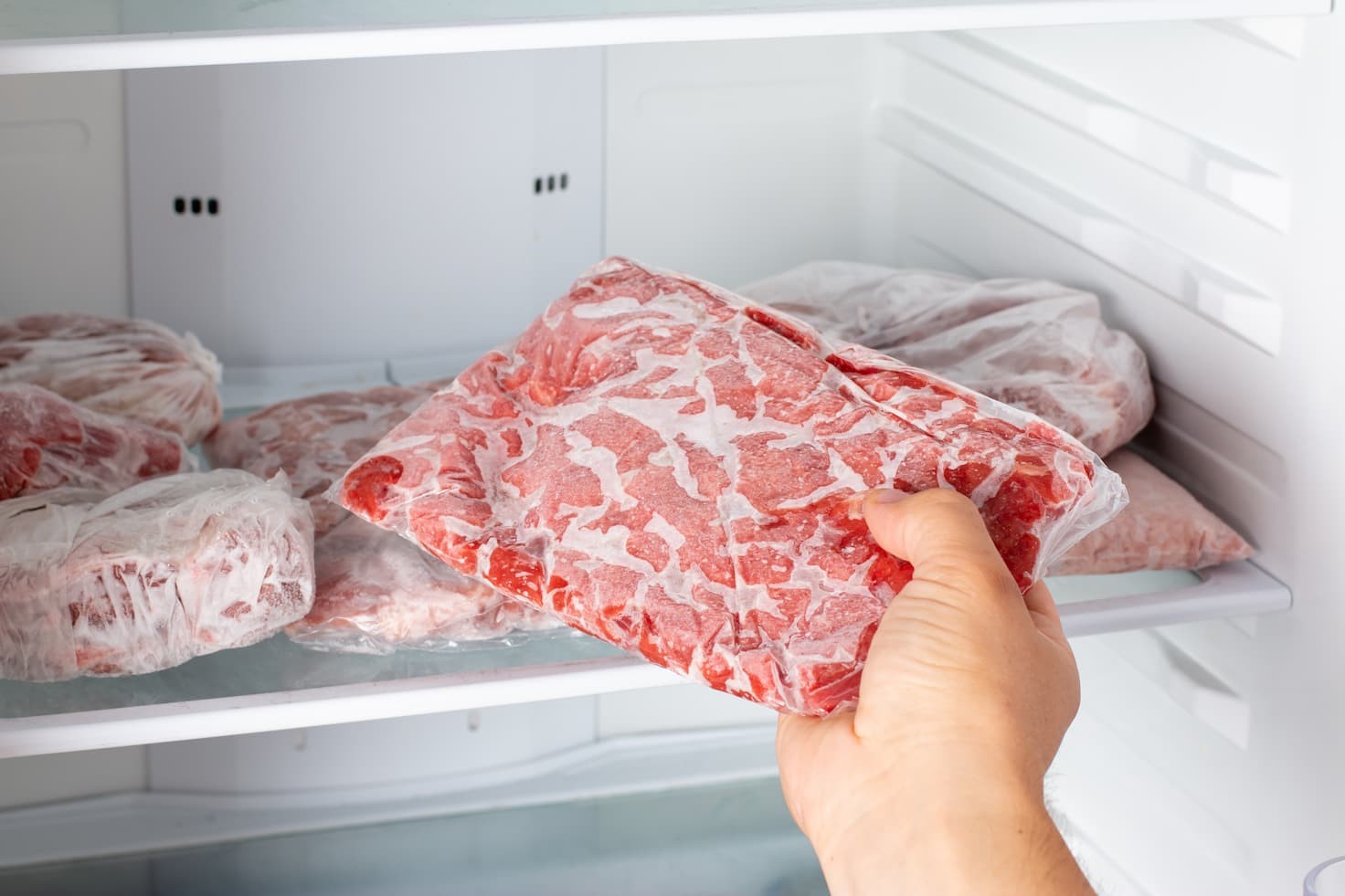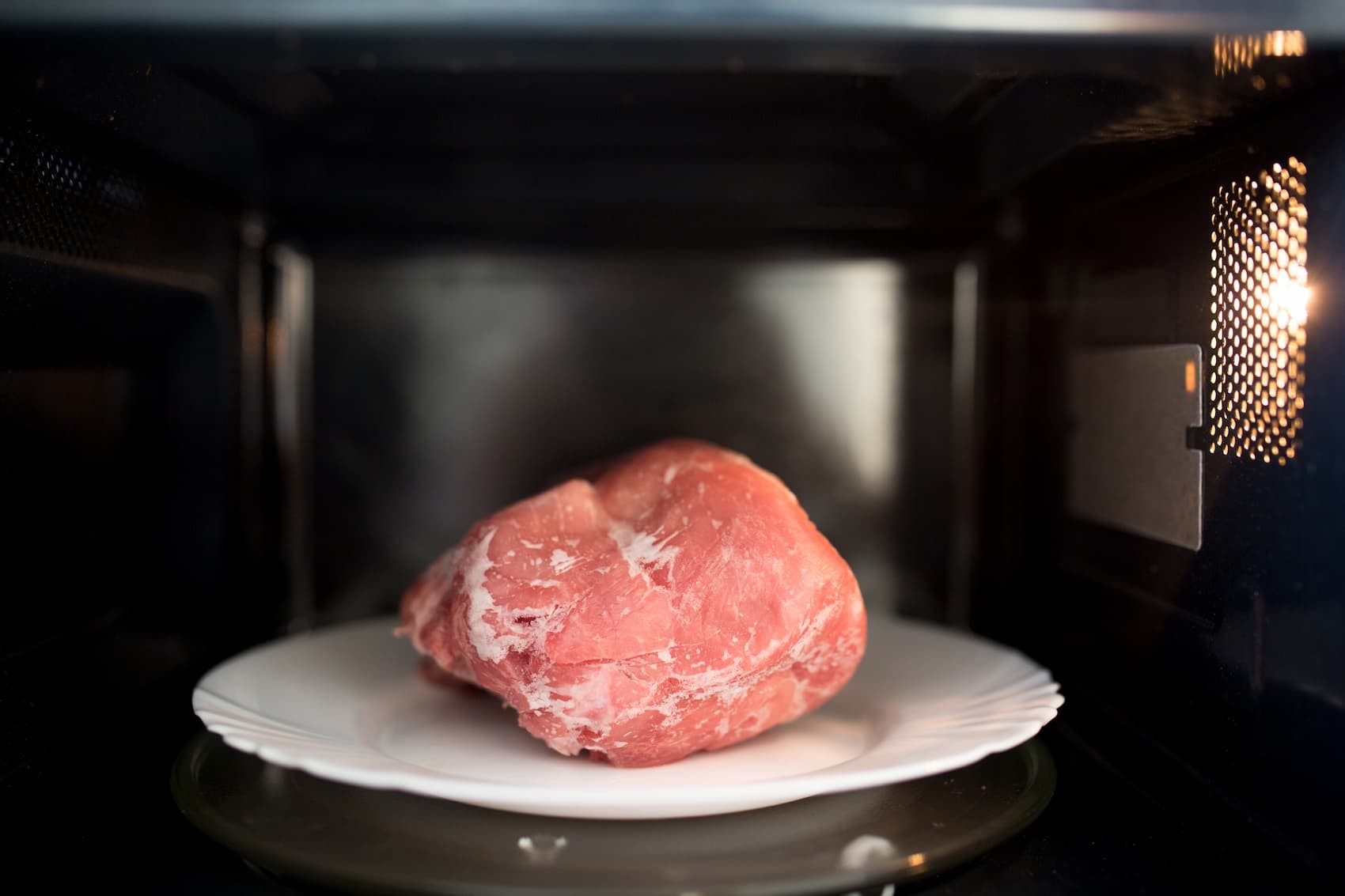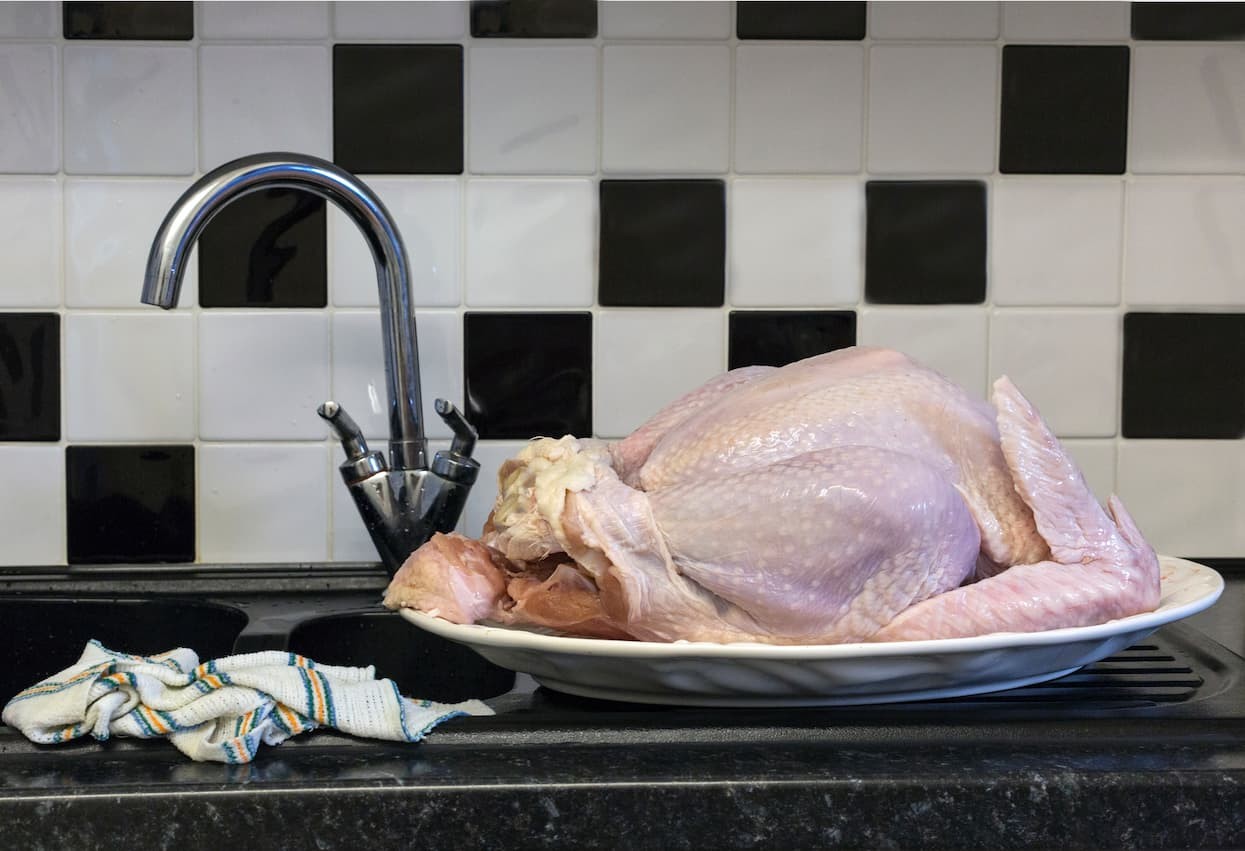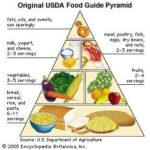What Is The Proper Thawing Procedure For Frozen Food? At FOODS.EDU.VN, we understand that safe thawing practices are crucial for preventing bacterial growth and foodborne illnesses, ensuring your meals are both delicious and safe. This guide provides expert-backed methods to safely thaw frozen foods, maintaining their quality and protecting your health. Learn more about proper food handling and explore advanced culinary techniques at FOODS.EDU.VN.
1. Understanding Food Thawing: The Basics
Food thawing is the essential process of reversing the effects of freezing, bringing frozen food back to a usable state for cooking. Freezing is a powerful preservation method, but thawing requires careful attention to avoid health risks. This involves melting the ice crystals that form during freezing, preparing the food for safe and effective cooking.
1.1 Why Thawing Matters
Thawing is crucial because it allows for even cooking. When food isn’t properly thawed, the outside can overcook while the inside remains frozen, creating a breeding ground for bacteria. The primary goal is to raise the food’s temperature above freezing (32°F or 0°C) in a controlled manner to prevent any part of the food from lingering too long in the temperature danger zone.
Skipping the thawing process can indeed lead to uneven cooking, where the center of the food might not reach a safe internal temperature, potentially leading to bacterial growth and foodborne illnesses. It’s crucial to ensure that the thawing process is conducted safely to mitigate these risks.
1.2 The Temperature Danger Zone
The temperature danger zone is a critical concept in food safety, referring to the temperature range between 40°F (4°C) and 140°F (60°C). Bacteria thrive within this range, so it is vital to minimize the time food spends in this zone during thawing. Proper thawing techniques ensure that food passes through this zone as quickly as possible, reducing the risk of bacterial growth.
Food handlers must avoid leaving frozen food at room temperature to thaw. This practice allows the outer layers of the food to enter the danger zone, where bacteria can multiply rapidly. Always use approved methods to keep the food safe. For further insights into safe food handling, visit FOODS.EDU.VN.
2. Approved Thawing Methods: A Detailed Guide
According to food safety agencies, there are three safe methods for thawing frozen food: in the refrigerator, in cold water, and in the microwave. These methods balance temperature control and thawing time to minimize the risk of bacterial growth.
2.1 Refrigerator Thawing: The Safest Approach
Thawing frozen food in the refrigerator is widely considered the safest method. It maintains a consistent, low temperature, preventing the food from entering the temperature danger zone. This method requires planning, as thawing times can be lengthy, especially for larger items.
Benefits of Refrigerator Thawing:
- Consistent Temperature: Keeps food at a safe temperature (below 40°F or 4°C).
- Reduced Risk of Bacterial Growth: Minimizes time spent in the temperature danger zone.
- Flexibility: Thawed food can remain in the refrigerator for an additional day or two before cooking.
- Refreezing: Food thawed in the refrigerator can be safely refrozen if needed.
How to Thaw in the Refrigerator:
- Plan Ahead: Estimate the thawing time based on the size and type of food.
- Place Food Properly: Put the frozen food on a plate or in a container to catch any drips.
- Monitor Temperature: Ensure your refrigerator maintains a temperature of 40°F (4°C) or below.
Estimated Thawing Times (Refrigerator):
| Food Item | Size/Weight | Estimated Thawing Time |
|---|---|---|
| Chicken Breasts | 1 pound | 12-24 hours |
| Ground Meat | 1 pound | 12-24 hours |
| Roast | 3-4 pounds | 24-36 hours |
| Whole Turkey | 12-16 pounds | 3-4 days |
| Fish Fillets | 1 pound | 6-12 hours |



For more detailed information on safe food handling and temperature guidelines, explore the resources at FOODS.EDU.VN.
2.2 Cold Water Thawing: A Faster Alternative
For a quicker thawing process, the cold water method is a good option. Submerging food in cold water facilitates faster temperature change compared to refrigerator thawing, as the water evenly coats the entire food item.
Important Considerations for Cold Water Thawing:
- Leak-Proof Packaging: Food must be in a sealed, leak-proof bag to prevent water contamination.
- Frequent Water Changes: Change the water every 30 minutes to maintain a cold temperature.
- Immediate Cooking: Thawed food must be cooked immediately to prevent bacterial growth.
Step-by-Step Guide to Cold Water Thawing:
- Seal the Food: Place the frozen food in a leak-proof bag, removing as much air as possible.
- Submerge in Cold Water: Completely submerge the bag in a bowl or sink filled with cold tap water.
- Change Water Regularly: Replace the water every 30 minutes to ensure it remains cold.
- Cook Immediately: Once thawed, cook the food immediately.
Estimated Thawing Times (Cold Water):
| Food Item | Size/Weight | Estimated Thawing Time |
|---|---|---|
| Chicken Breasts | 1 pound | 1-2 hours |
| Ground Meat | 1 pound | 1-2 hours |
| Fish Fillets | 1 pound | 30 minutes – 1 hour |
| Steak | 1 inch thick | 1-2 hours |
| Shrimp | 1 pound | 30 minutes |
Alternative: Cool Running Water
An alternative to submerging food is thawing under cool running water. This method requires sealing the food in a leak-proof package and placing it in a strainer or colander under a gentle stream of cold water. While effective, this method can be wasteful due to the continuous use of water.
For additional tips on efficient and safe food preparation, visit FOODS.EDU.VN.
2.3 Microwave Thawing: The Quickest, but Riskiest
Microwave thawing is the fastest method, but it comes with its own set of risks. Microwaves can heat food unevenly, leading to some parts thawing faster than others.
Precautions for Microwave Thawing:
- Use Defrost Setting: Utilize the defrost setting to minimize cooking during thawing.
- Immediate Cooking: Food thawed in the microwave should be cooked immediately.
- Monitor Closely: Check the food frequently to ensure it doesn’t start cooking.
How to Thaw in the Microwave:
- Check Microwave Instructions: Follow the microwave manufacturer’s instructions for thawing.
- Use Defrost Setting: Select the defrost setting and enter the food’s weight.
- Rotate and Check: Rotate the food periodically to ensure even thawing.
- Cook Immediately: Cook the food immediately after thawing.
Estimated Thawing Times (Microwave):
| Food Item | Size/Weight | Estimated Thawing Time |
|---|---|---|
| Chicken Breasts | 1 pound | 8-10 minutes |
| Ground Meat | 1 pound | 8-10 minutes |
| Fish Fillets | 1 pound | 6-8 minutes |
| Vegetables | 1 pound | 4-6 minutes |
Microwave thawing can be convenient but requires careful monitoring to prevent partial cooking and ensure safety. For more information on safe microwave use and cooking techniques, visit FOODS.EDU.VN.
2.4 Thawing as Part of the Cooking Process
In some cases, certain foods can be cooked directly from their frozen state. This method works best for thin or small items like burger patties, French fries, dumplings, and minced meat. Cooking without thawing requires careful heat management to ensure the food cooks evenly.
Tips for Cooking Frozen Foods:
- Lower Heat: Use a lower cooking temperature to prevent the outer layer from cooking too quickly.
- Longer Cooking Time: Increase the cooking time to ensure the center reaches a safe temperature.
- Monitor Closely: Watch the food carefully to prevent burning or uneven cooking.
Foods Suitable for Cooking Without Thawing:
- Burger patties
- Fries
- Dumplings
- Baked products (pies and cookies)
- Minced meat
- Raw fish
For more detailed cooking guides and recipe ideas, visit FOODS.EDU.VN.
3. Unsafe Thawing Practices: What to Avoid
It’s crucial to avoid thawing food at room temperature on the countertop. This unsafe practice allows the outer layers of the food to enter the temperature danger zone, where bacteria can multiply rapidly.
Why Room Temperature Thawing is Dangerous:
- Bacterial Growth: The temperature danger zone (40°F – 140°F) promotes rapid bacterial growth.
- Food Spoilage: Harmful bacteria can spoil the food, making it unsafe to eat.
- Foodborne Illness: Consuming contaminated food can lead to food poisoning and other illnesses.
For safe food handling tips and best practices, consult the resources available at FOODS.EDU.VN.
4. Best Practices for Thawing Frozen Food
To ensure food safety and quality, follow these best practices when thawing frozen food:
4.1 Planning and Preparation
- Plan Ahead: Estimate thawing times based on the size and type of food.
- Use Proper Equipment: Ensure you have leak-proof bags, containers, and thermometers.
- Maintain Cleanliness: Keep your refrigerator, sink, and microwave clean to prevent contamination.
4.2 Monitoring and Rotation
- Monitor Temperature: Regularly check the temperature of your refrigerator to ensure it remains below 40°F (4°C).
- Rotate Food: If using the microwave or cold water method, rotate the food to ensure even thawing.
- Check for Doneness: Use a food thermometer to verify that the food has thawed evenly and completely.
4.3 Refreezing Thawed Food
- Refrigerator-Thawed Food: Food thawed in the refrigerator can be safely refrozen without cooking.
- Other Methods: Food thawed in cold water or the microwave should be cooked before refreezing.
- Quality Considerations: Refreezing can affect the texture and flavor of some foods, so consider this when deciding whether to refreeze.
5. Addressing Common Thawing Myths and Mistakes
Several common myths and mistakes can compromise the safety of thawed food. Let’s debunk some of these misconceptions:
5.1 Myth: You Don’t Need to Plan Ahead
Reality: Planning is essential for safe thawing. Thawing in the refrigerator takes time, so it’s crucial to plan accordingly.
5.2 Myth: You Can Thaw Food on the Counter
Reality: Thawing food at room temperature is unsafe due to the risk of bacterial growth.
5.3 Myth: You Don’t Need to Monitor Refrigerator Temperature
Reality: Monitoring the temperature of your refrigerator ensures that food stays at a safe temperature during thawing.
5.4 Myth: Any Bag Will Do for Water Thawing
Reality: Use only leak-proof bags to prevent water contamination and ensure food safety.
5.5 Myth: Rotating Food in the Microwave is Unnecessary
Reality: Rotating food in the microwave ensures even thawing and prevents hot spots.
By avoiding these common mistakes and understanding the facts, you can ensure that your thawing practices are safe and effective. For more expert advice and resources, visit FOODS.EDU.VN.
6. Food Safety Monitoring Systems: Ensuring Compliance
Maintaining a comprehensive food safety monitoring system is essential for ensuring that all thawing practices are followed correctly. A reliable system helps your team remember crucial tasks and ensures compliance with food safety standards and regulations.
6.1 Digital Food Safety Management Systems
Digital Food Safety Management Systems (FSMS) offer a smarter way to manage food safety tasks. These systems provide automatically generated digital monitoring logs tailored to your specific food operations.
Benefits of Digital FSMS:
- Automated Monitoring Logs: Replace traditional paper logs with digital records for freezer temperature, calibration, and receiving temperature.
- Detailed Instructions: Provide step-by-step guidance on how to perform food safety tasks effectively.
- Smart Notifications: Remind employees of tasks that need to be done, ensuring timely monitoring.
- Real-Time Dashboard: Offer an overview of your entire operation, allowing you to identify and address potential issues quickly.
- Cloud Storage: Securely store all monitoring logs and essential food safety documents in one place.
6.2 How FOODS.EDU.VN Can Help
At FOODS.EDU.VN, we provide resources and information to help you implement effective food safety practices in your kitchen or food business. Our website offers detailed guides, checklists, and tools to ensure compliance with food safety regulations.
Explore our resources to learn more about:
- Safe food handling practices
- Temperature monitoring guidelines
- Preventing foodborne illnesses
- Implementing a comprehensive food safety plan
7. Advanced Tips and Techniques for Thawing
Beyond the basics, several advanced techniques can enhance the thawing process and improve food quality.
7.1 Vacuum Sealing for Water Thawing
Using a vacuum sealer to package food before water thawing can significantly improve the process. Vacuum sealing removes air, allowing for more efficient heat transfer and reducing the risk of water contamination.
Benefits of Vacuum Sealing:
- Faster Thawing: Improved heat transfer speeds up the thawing process.
- Enhanced Food Quality: Prevents freezer burn and maintains food texture.
- Reduced Contamination Risk: Creates a tight seal, protecting food from waterborne bacteria.
7.2 Using a Sous Vide Immersion Circulator
For precise temperature control during water thawing, consider using a sous vide immersion circulator. This device maintains a constant water temperature, ensuring even and safe thawing.
Advantages of Sous Vide Thawing:
- Precise Temperature Control: Maintains water temperature within a narrow range.
- Even Thawing: Ensures consistent thawing throughout the food item.
- Reduced Risk of Overheating: Prevents partial cooking during thawing.
7.3 Thawing in a Convection Oven
Some convection ovens offer a defrost setting that circulates air to thaw food more quickly than refrigerator thawing. This method requires careful monitoring to prevent the food from warming too much.
Tips for Convection Oven Thawing:
- Use Defrost Setting: Select the defrost setting to circulate air without adding heat.
- Monitor Closely: Check the food frequently to ensure it doesn’t start cooking.
- Rotate Food: Rotate the food to promote even thawing.
8. Frequently Asked Questions (FAQs) About Thawing Food
Here are some frequently asked questions about thawing food, addressing common concerns and providing helpful tips:
8.1 Is it safe to thaw meat on the counter?
No, it is not safe. Thawing meat on the counter allows the outer layers to reach temperatures where bacteria can rapidly multiply, increasing the risk of foodborne illness.
8.2 How long can food stay in the refrigerator after thawing?
Generally, thawed food can stay in the refrigerator for one to two days before cooking. However, it’s best to cook it as soon as possible to maintain quality and safety.
8.3 Can I refreeze meat after thawing it in the refrigerator?
Yes, you can safely refreeze meat that has been thawed in the refrigerator, provided it has been kept at a safe temperature (below 40°F or 4°C) during thawing.
8.4 What’s the best way to thaw ground meat quickly?
For quick thawing of ground meat, use the cold water method. Place the meat in a leak-proof bag and submerge it in cold water, changing the water every 30 minutes.
8.5 Can I cook frozen chicken without thawing it first?
Yes, you can cook frozen chicken without thawing, but it will require a longer cooking time and a lower temperature to ensure it cooks evenly and reaches a safe internal temperature.
8.6 How do I know if my refrigerator is cold enough for safe thawing?
Use a refrigerator thermometer to monitor the temperature. It should consistently stay at or below 40°F (4°C) to ensure safe thawing.
8.7 Is it better to thaw food slowly or quickly?
Thawing food slowly in the refrigerator is generally safer because it minimizes the time the food spends in the temperature danger zone. However, if you need to thaw food quickly, use the cold water or microwave method with careful monitoring.
8.8 What’s the proper way to thaw fish fillets?
Thaw fish fillets either in the refrigerator or using the cold water method. Ensure they are in a sealed bag if using water and cook them immediately after thawing.
8.9 How often should I change the water when thawing food in cold water?
Change the water every 30 minutes to maintain a cold temperature and prevent bacterial growth.
8.10 Can I use warm water to thaw food faster?
No, never use warm or hot water to thaw food. Warm water can quickly raise the temperature of the outer layers into the danger zone, promoting bacterial growth.
9. Real-World Examples of Safe Thawing Procedures
To illustrate the importance of proper thawing, let’s examine a few real-world scenarios where safe thawing procedures are crucial:
9.1 Thawing a Turkey for Thanksgiving
A common challenge during Thanksgiving is thawing a large turkey. The safest method is to thaw it in the refrigerator, which can take several days.
Example:
- A 16-pound turkey requires approximately 3-4 days to thaw in the refrigerator.
- Place the turkey on a tray to catch any drips and prevent cross-contamination.
- Monitor the refrigerator temperature to ensure it remains below 40°F (4°C).
9.2 Thawing Chicken Breasts for Dinner
For a quicker meal preparation, chicken breasts can be thawed using the cold water method.
Example:
- Place 1 pound of chicken breasts in a leak-proof bag.
- Submerge the bag in cold water, changing the water every 30 minutes.
- The chicken should thaw in about 1-2 hours.
- Cook immediately after thawing to ensure safety.
9.3 Thawing Ground Beef for Tacos
Ground beef can be thawed in the microwave for a fast taco night.
Example:
- Use the defrost setting on your microwave and follow the manufacturer’s instructions.
- Rotate the ground beef periodically to ensure even thawing.
- Cook the ground beef immediately after thawing to prevent bacterial growth.
10. The Future of Food Thawing Technology
As technology advances, new methods for thawing food are emerging, promising to improve safety, efficiency, and food quality.
10.1 High-Pressure Processing (HPP)
High-Pressure Processing (HPP) is a non-thermal pasteurization technique that uses high pressure to kill bacteria and extend the shelf life of food. HPP can also be used to thaw frozen food more evenly and quickly than traditional methods.
Benefits of HPP:
- Faster Thawing: Reduces thawing time compared to traditional methods.
- Improved Food Quality: Maintains the texture, flavor, and nutritional value of food.
- Enhanced Safety: Kills harmful bacteria and extends shelf life.
10.2 Radio Frequency (RF) Thawing
Radio Frequency (RF) thawing uses electromagnetic waves to generate heat within the food, resulting in rapid and uniform thawing.
Advantages of RF Thawing:
- Uniform Heating: Thaws food evenly, reducing the risk of hot spots.
- Faster Thawing: Significantly reduces thawing time compared to traditional methods.
- Improved Energy Efficiency: Uses energy more efficiently than conventional thawing methods.
10.3 Ultrasonic Thawing
Ultrasonic thawing uses sound waves to create cavitation, which helps to break down ice crystals and thaw food more quickly.
Benefits of Ultrasonic Thawing:
- Faster Thawing: Reduces thawing time significantly.
- Reduced Drip Loss: Minimizes the loss of moisture and nutrients during thawing.
- Improved Texture: Helps maintain the texture and quality of the thawed food.
These emerging technologies hold great promise for the future of food thawing, offering faster, safer, and more efficient methods for preparing frozen food. Keep an eye on FOODS.EDU.VN for the latest updates and advancements in food technology.
Safe thawing is a critical aspect of food preparation, ensuring that your meals are both delicious and free from harmful bacteria. By following the guidelines outlined in this article, you can confidently thaw frozen food while maintaining its quality and protecting your health. Explore the resources at FOODS.EDU.VN for more expert advice, cooking tips, and food safety information.
Ready to take your culinary skills to the next level? Visit FOODS.EDU.VN today and discover a wealth of knowledge on food safety, cooking techniques, and delicious recipes. Whether you’re a home cook or a professional chef, FOODS.EDU.VN is your ultimate resource for all things food-related. Don’t miss out on the opportunity to enhance your culinary expertise and create unforgettable dining experiences. Visit foods.edu.vn now and start your culinary journey! For questions or assistance, contact us at 1946 Campus Dr, Hyde Park, NY 12538, United States, or call +1 845-452-9600.
